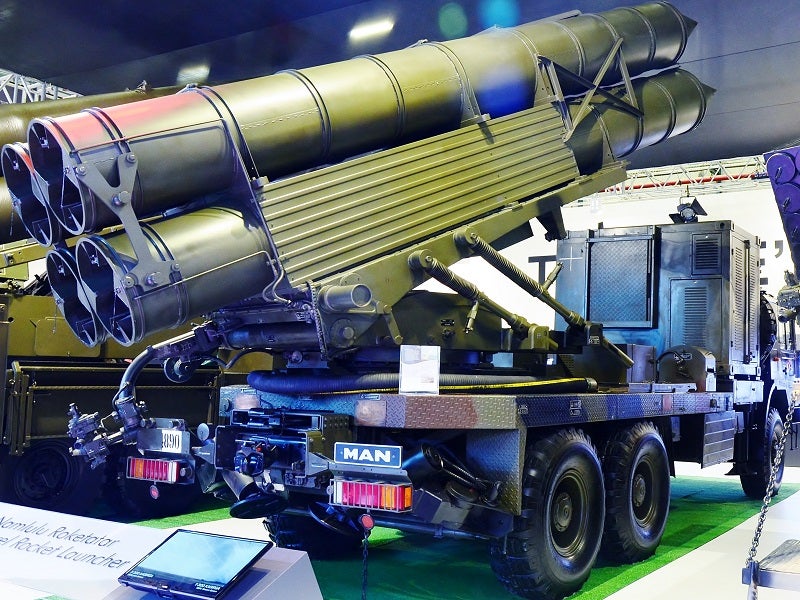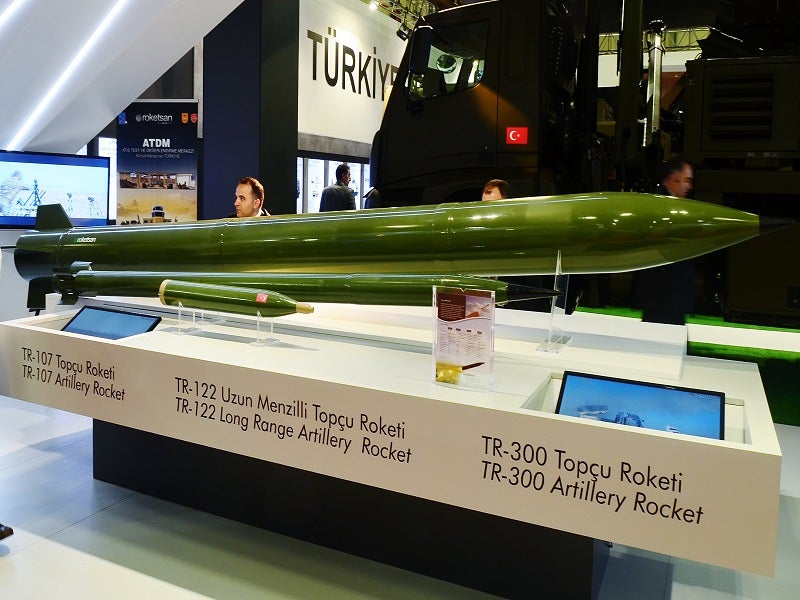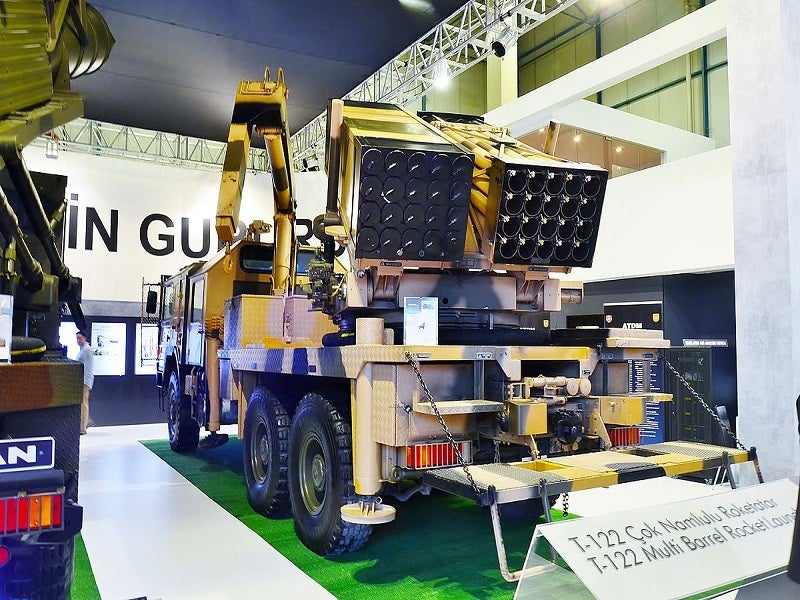The TRG-300 Tiger multiple launch rocket system (MLRS) system is a modern missile launching system developed for the Turkish Armed Forces. It is manufactured by Turkish weapons manufacturer and defence contractor Roketsan.
The weapon system integrates the Tiger missile and the T-122/300 multi-calibre and multi-barrel rocket launching (MBRL) system. It uses sealed and thermally insulated rocket pods to launch missiles. The new missile system can provide maximum protection against adverse threats.
The TRG-300 Tiger, also known as TRG-300 Kaplan, is an improved version of the T-300 Kasirga missile system. Azerbaijan is the first foreign importer of the TRG-300 Tiger rocket launcher system.
The Kaplan rocket launcher was deployed by the Turkish Armed Forces during combat operations in northern Syria. The capabilities of the weapon system were proved in an armed conflict against the Syrian regime after 33 Turkish soldiers were killed by Syrian forces in Idlib province in February 2020.
Orders and deliveries of TRG-300 Tiger MLRS
Roketsan delivered the TRG-300 Tiger missile system to the Azerbaijan Ministry of Defense (MoD) in 2016. In May 2020, the MoD revealed that the 300-mm TRG-300 Kaplan (Tiger) rocket launchers were inducted into Azerbaijani Armed Forces’ Nakhchivan Garrison military unit.
In June 2021, the Bangladesh Army received the TRG-300 MLRS under a contract worth approximately $60m. Bangladesh will receive a total of three batteries of the weapon system, which translates to 18 launch vehicles.
TRG-300 MBRL design and features
The MBRL is designed to provide highly-mobile long-range fire support for ground forces. It is capable of launching warheads of 122mm and 300mm depending on the mission requirements. The modular and flexible architecture will also allow the weapon system to accommodate future rockets and guided weapons.
The missile launch system can offer all-weather protection for high-priority targets during day and night. The weapon system includes all the subsystems required for successful engagement and launch.
The MBRL launcher has a range of 3km to 100km and can fire the missiles from four pods. The launch vehicle can be based on a 6×6 or 8×8 tactical wheeled truck chassis, equipped with four hydraulic stabilisation jacks for better stabilisation. Fitted at the rear end of the vehicle, the launcher unit can fire four rounds of 300mm rockets or 40 rounds of 122mm rockets.
The launcher has minimum reloading time and a minimum salvo interval of 0.5 seconds for 122mm rockets and six seconds for 300mm rockets. The launch truck can accommodate a crew of two, including a commander and a driver. The design allows for the customisation to support increased crew to suit the missile requirements of customers.
The launch platform can be integrated with a ground meteorology system, as well as a power supply and distribution system. Furthermore, the manufacturer provides an option to equip the mobile launcher with ballistic protection for increased survivability.
The weapon system has both local and remote fire control options. The weapon system has fully automatic weapon control, navigation and laying systems.
The T-122/300 missile system can be used in a range of missions including peace support operations, fire missions, and standard tactical missions in support of a manoeuvring force.
TRG-300 Tiger missile
The T-122/300 MBRL system can launch a range of missiles, including the TRG-300 Tiger. The TRG-300 missile can destroy critical targets, including artillery and air defence systems, radar sites, and logistic facilities, with high precision. Available in two variants, the 585kg missile is powered by a composite solid propellant.
The Block I missile variant carrying 105kg warhead has a range of 30km-120km, while the Block II variant carrying 150kg warhead has a range of 20km-90km. Both the missile variants can carry high explosive (HE) and steel ball-type warheads with an effective radius of more than 70m.
The TRG-300 Tiger missile has a proximity fuse with point detonating backup. The circular error probability (CEP) of the missile is less than 10m. The all-weather, all-terrain missile ensures low collateral damage.
Navigation and communication systems of TRG-300 MLRS
The inertial navigation system (INS)/global positioning system (GPS) and automatic laying system of the launcher are integrated into the weapon management system. The integration provides shoot and scoot capability, allowing the T-122/300 to fire within five minutes and move to the next firing position.
The TRG-300 Tiger missile has a GPS and global navigation satellite system aided INS guidance system. It is also equipped with anti-jamming and anti-spoofing equipment. The MLRS is equipped with wired and wireless voice and data communications systems.
The secure digital and voice communications along with the shoot and scoot capability make the T-122/300 less vulnerable on the battlefield.
Fire control system of TRG-300 Tiger MLRS
The T-122/300 launcher has a multi-calibre cradle for loading missiles of different sizes. The missile launch can be performed either locally or remotely, thanks to the T-122/300’s remote firing ability. The MLRS can automatically lock on the target using INS and GPS technology.
Mobility
The T-122/300 launch vehicle features superior on-road and off-road capabilities. It can be transported by road, railway, air or sea. The platform can achieve a maximum road speed of more than 90km/h.
T-122/300 MBRL battery
A typical battery of the MBRL system includes six launcher vehicles, a C-122/300 command and control vehicle, an L-122/300 ammunition supply vehicle, an M-122/300 meteorological (MET) vehicle, and an R-122/300 repair vehicle.
The T-122/300 battery’s command and control system and weapon management system support the integration with tactical fire direction systems, target acquisition systems, as well as battlefield command and control and management systems.




